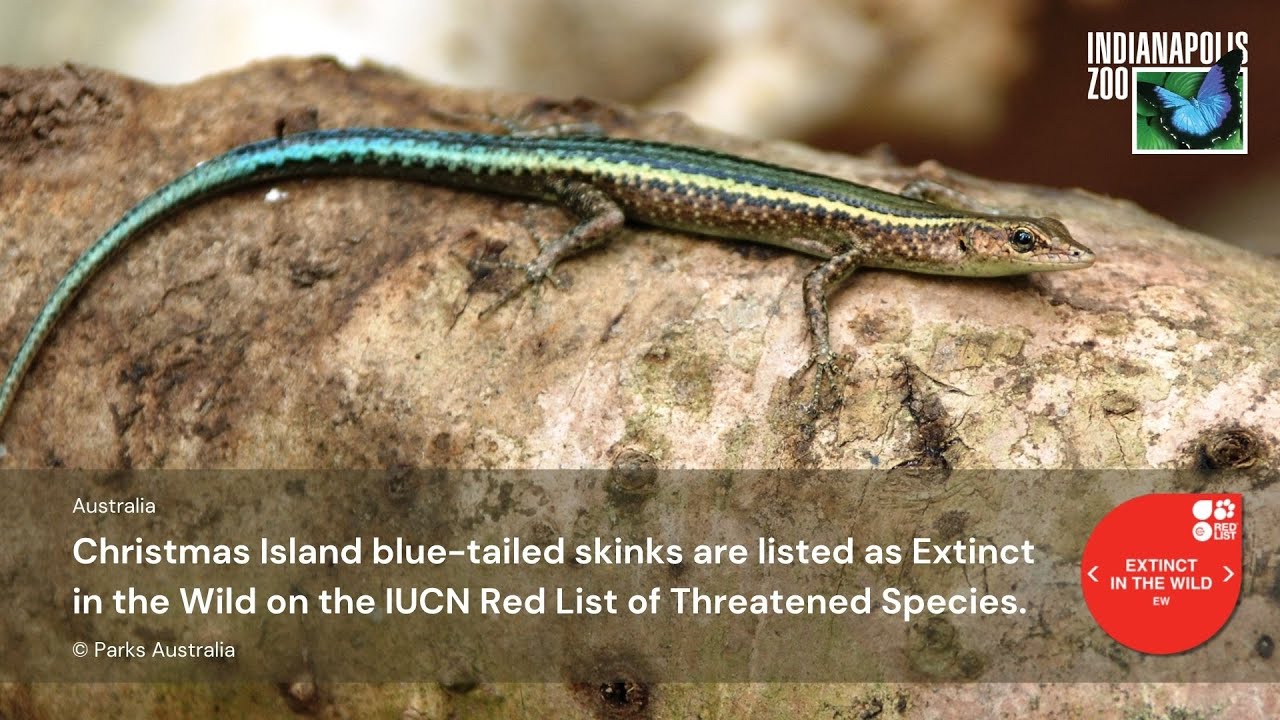– The ecological and biological aspects of the Christmas Island blue-tailed skink
– Conservation efforts for the Christmas Island blue-tailed skink
– The role of zoos and wildlife organizations in preserving endangered species
– Challenges faced in the conservation of small island species
– Prospects for the Christmas Island blue-tailed skink and similar endangered species
The Christmas Island blue-tailed skink, a vibrant reptile known for its distinctive cobalt-blue tail and agile nature, is a fascinating subject for those passionate about zoology and conservation. Indigenous to Christmas Island, this skink provides a window into the complex interplay between unique ecosystems and human impact. Despite its allure, the species faces dire threats from habitat loss, invasive species, and environmental changes. This article delves into the life of the Christmas Island blue-tailed skink, exploring its ecological role, the conservation strategies to protect it, and the collaborative efforts needed to ensure its survival.
Ecologic and Biological Insights
The Christmas Island blue-tailed skink, cryptically blending into its tropical forest home, plays a crucial role in its ecological balance. Feeding on a variety of insects aids in controlling pest populations while also serving as prey for larger native predators. Its biological characteristics, including reproduction and lifespan, are pivotal for understanding how to best support its population. However, the precise dynamics of these aspects remain partially understood, underscoring the need for continued research.
Conservation Initiatives
The species has declined steeply over recent years, compelling conservationists to act swiftly. Efforts to preserve the Christmas Island blue-tailed skink encompass habitat restoration, predator control, and the establishment of captive breeding programs. Notably, these skinks have been successfully bred in captivity, a beacon of hope for the species. Zoos and conservation organizations globally have united, sharing knowledge and resources to bolster the skink’s chances of survival.
The Indispensable Role of Zoos and Wildlife Organizations
Zoos and wildlife bodies are leading the battle to save the Christmas Island blue-tailed skink. By fostering captive populations, they provide a safety net against extinction, enabling scientists to study the skink in controlled environments. Furthermore, these institutions play a vital educational role, raising awareness about the skink’s plight and the broader issues threatening biodiversity.
Challenges in Conservation
Efforts to conserve the Christmas Island blue-tailed skink face several hurdles. The invasive species, such as cats and rats introduced by humans, prey on skinks and compete for food, exacerbating the skinks’ vulnerability. Additionally, habitat destruction, accelerated by mining and urban expansion, shrinks the skinks’ living space. Combating these challenges demands a multifaceted approach, incorporating local community engagement, strict environmental policies, and international collaboration.
Future Directions
The path forward for the Christmas Island blue-tailed skink requires a sustained commitment from governments, NGOs, and the global community. Advances in genetic research, habitat restoration techniques, and conservation strategies offer hope for the skink and other imperiled species. By prioritizing the preservation of biodiversity hotspots and enforcing stringent environmental regulations, we can strive for a future where the Christmas Island blue-tailed skink thrives in the wild.
The Christmas Island blue-tailed skink embodies the fragility and resilience of island ecosystems. Its story is a poignant reminder of the interconnectedness of life and the importance of comprehensive conservation efforts. Through dedicated research, innovative conservation practices, and global cooperation, there is potential to reverse the fortunes of this captivating species. The journey to safeguard the Christmas Island blue-tailed skink accentuates the broader imperative to protect our planet’s irreplaceable biodiversity for future generations.
*****
Source Description
Christmas Island blue-tailed skink is a small lizard that is endemic to the Australian territory for which it is named. The skinks prefer pristine forests and coastal vegetation. They spend their time climbing, basking and eating insects. In 2009, 66 skinks were taken into captivity to secure the species’ future through captive breeding. Christmas Island blue-tailed skinks are listed as Extinct in the Wild on the IUCN Red List of Threatened Species. Captive breeding has been very successful and there are about 1,500 skinks alive today. The main threats facing Christmas Island blue-tailed skinks are predation and competition from introduced species.
If awarded $1 million from the Indianapolis Zoo’s Saving Species Challenge, conservationists would take the following steps:
– Complete feasibility assessment for translocation
– Upgrade captive breeding facility on Christmas Island
– Control and eradicate introduced predators
– Translocate skinks to new habitat
– Monitor skinks post-translocation
You can learn more about Christmas Island blue-tailed skinks from the IUCN SSC Skink Specialist Group.
The winner of the Indianapolis Zoo’s Saving Species Challenge will be announced later this year. Bookmark www.ProtectSpecies.com for updates.


